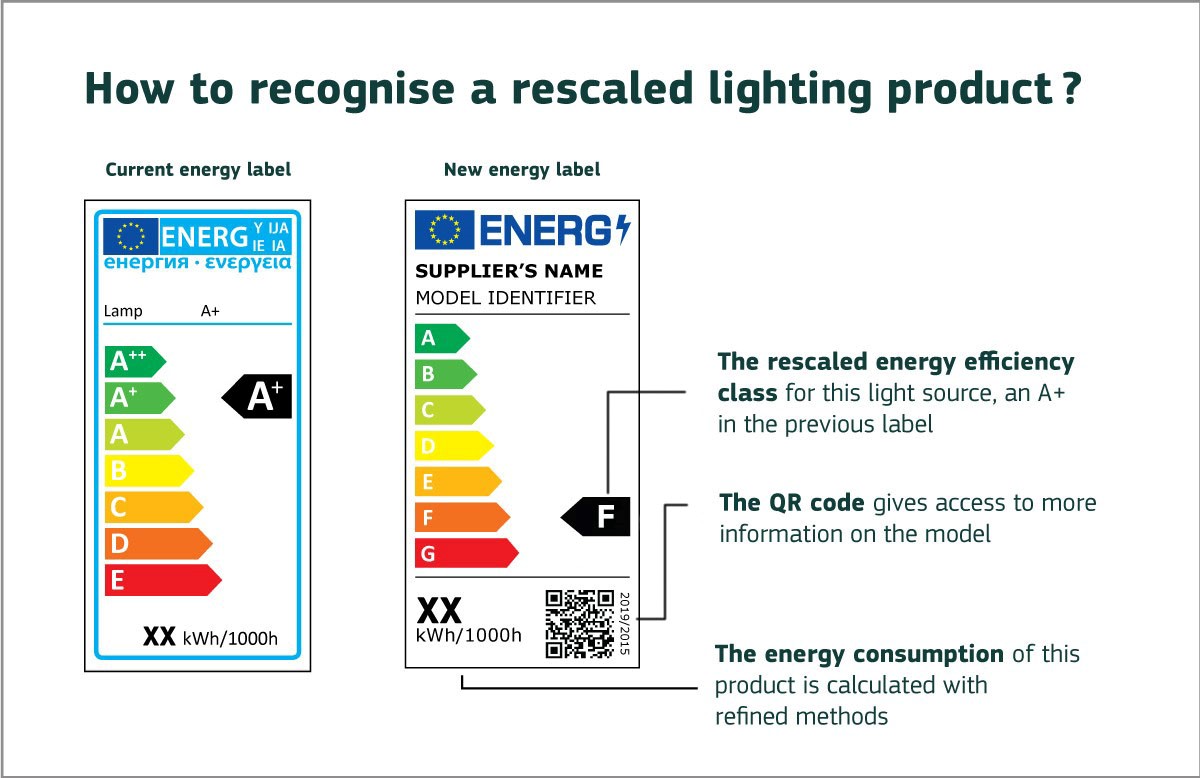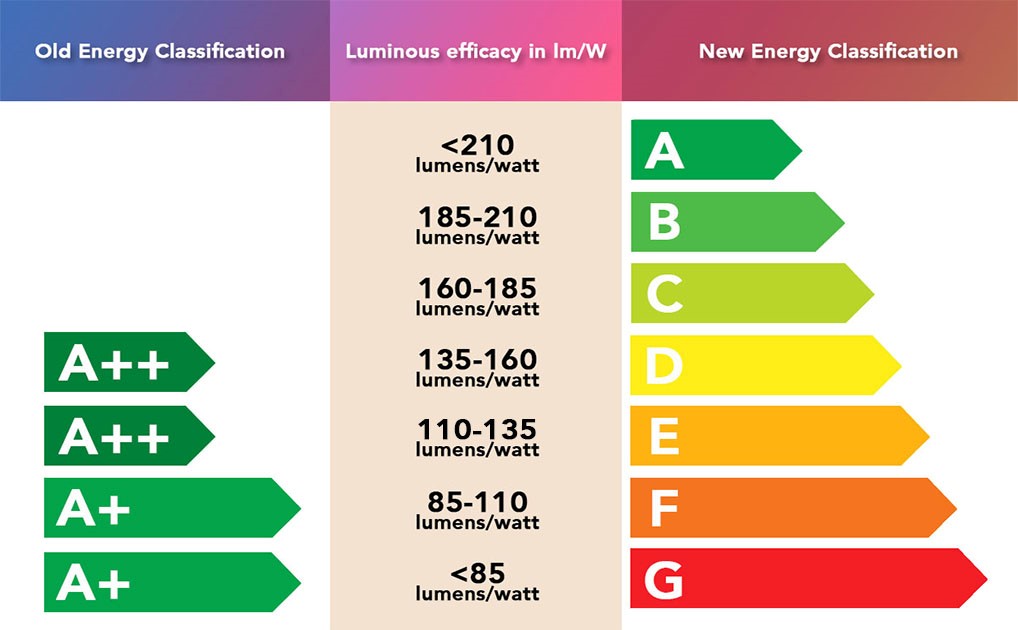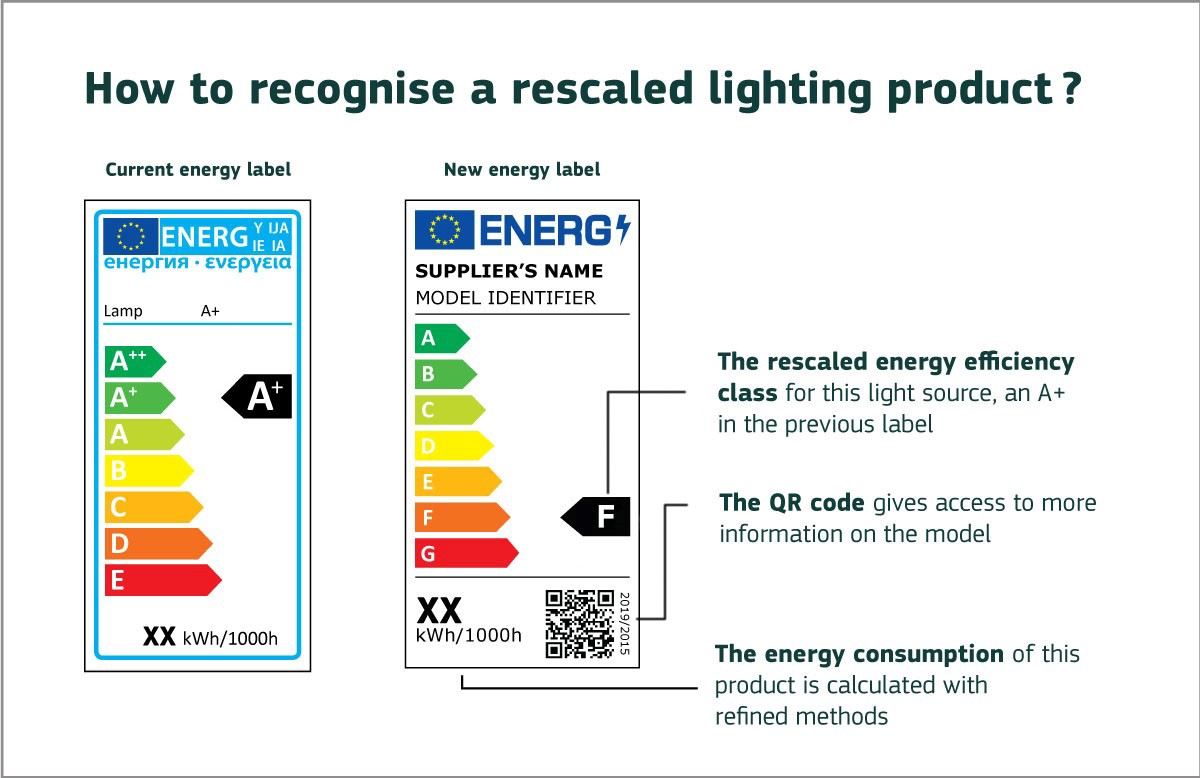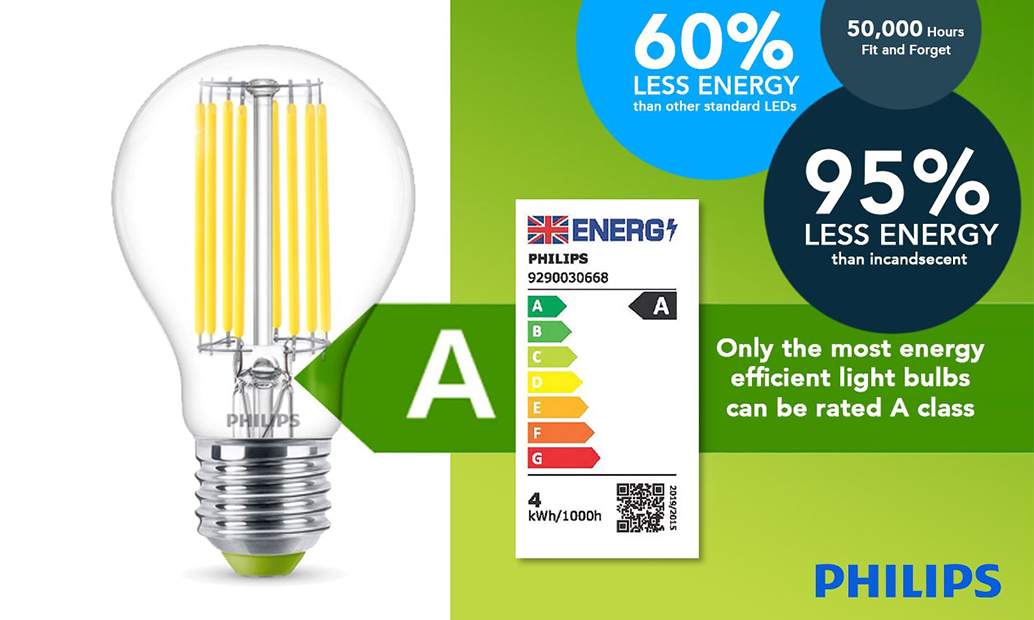
"Same old product.........just reclassified"
Many of you who have recently purchased a lighting product might have noticed that the energy label for that product has been changed and are probably wondering why it might be that the product you bought seems to have a much lower energy rating than first expected.
As of the 1st of October 2021, new energy rating labels for lighting products were introduced to allow the consumer more understanding of just how energy efficient that product is, the new energy rating label has already been introduced into the market for electrical appliances(March 2021), they use a similar scale but also consider things like noise emissions, water consumption along with electricity use.
In this blog, however, we are going to concentrate more on lighting products, to give you a better understanding when it comes to your next light bulb purchase.
Why change the Energy labelling system?
These changes have come about with the consumer in mind, these new revised & optimised energy labels are designed to make it easier to understand just how energy efficient a light bulb is. The old A+++ to D system had over 80% of products rated A or higher which left manufacturers with little need for improved sustainability. The new system has completely emptied the top A-rating for this purpose, and manufacturers have only recently come up with Ultra Efficient LED bulbs that are A-rated (see bottom section)
The new energy labelling for lighting is all based on luminous efficacy, which is a measure of how a light source produces visible light. It is the ratio of luminous flux (Perceived power of light) to power (energy transferred) measured in lumens per watt. For a light bulb to be A-rated it needs to have a luminous efficacy of 210 lm/W or higher, below is how the new energy ratings are worked out:-

When you compare the old energy label for appliances with the new one, it is clear how they differ. The new one, for example, not only has new energy classifications but also a scannable QR code. This QR code is included to make the shopping process much quicker. The other major change is a more generally accepted form of measurement being shown for energy consumption in kWh/1000h,(this is basically the energy efficiency of that light bulb) at the bottom of the new label, this makes it simpler to grasp how good the energy consumption of the light bulb really is.
What information is included in the new label?
The biggest visible change is that the EU symbol has been replaced by the Union Jack now that the UK has left the European Union but during the transition period you might see either using the new scale of A-G.
You will also notice a QR code, which you can scan to give you more product information and it’s also handy if you need further help with your product down the line.
For non-lighting products, you will see product-related information on the new labels for example as mentioned before noise emissions and water consumption and very specific information like washing loads in kgs or one of my favourites how many standard wine bottles a particular wine cooler holds.
The new energy rating label will place most existing energy-efficient lighting products in D or lower categories thus allowing for manufacturers to scale energy efficient innovations, for example, the popular Philips Master LED ExpertColor GU10 Spotlight which was rated A+ on the old system will have a new rating of “G” which could cause someone to think they are not energy efficient spotlight bulbs. At only 6kWh/1000 you will not find many products with a lower energy consumption with a CRI of 97 using only 5.5 watts of energy.
Whereas on the other hand, the Philips Master Value 3.4w LED SES Candle was also an A+ rated LED candle bulb on the old system, but now is rated as “D” using 4kWh/1000h which is not much difference when compared to the 5.5w GU10 bulb mentioned earlier, but it uses an innovative technology trademarked by Philips as DimTone which dims the bulb from 2700k to 2200k and the light colour warms as it dims, unlike other dimmable bulbs where only the brightness is affected.
Why does it look like I'm buying a less energy-efficient light bulb?

So, this new system while it might seem confusing at first glance when an A+ bulb changes suddenly to an “F” rated bulb, it’s relatively an energy efficient bulb when compared to incandescent, halogen or fluorescent lighting using relatively less energy, but the manufacturers are now being tasked to be more innovative when it comes to sustainability from lighting technology to packaging all this is considered in the new system.
LED technology has come a long way since its infancy offering light bulbs with a longer lifetime that uses less energy but as most products were bottlenecked into the top categories A++, A+, & A rating the need to develop energy-efficient technology and climate-friendly lighting wasn’t always prominent. Whilst you will still be able to buy lighting products already on the market using the old energy label (until September 2023) most leading manufacturers have already started to re-package their products using the new system.
Philips has introduced the Ultra Efficient LED range that includes the only A-rated GLS light bulb currently available in the market today. There are also B-rated GU10 spots in this range which are the most energy-efficient spots available with a luminous efficacy of 158 lm/W which is twice as much as their previous leading range the Master LED DimTone with only 85 lm/W.

With the Philips Ultra Efficient LED light bulb, you have the perfect retrofit lamp to help you save energy and money with high-quality, long-lasting, and ultra-energy-efficient LED. Philips’s leading innovation in LED lighting has progressed early versions of the Dubai lamp to bring you the UK’s most energy-efficient GLS light bulb.
This is the most energy-efficient LED bulb from Signify (Philips Lighting) the only ‘A’ rated GLS LED light bulb available on the UK market. 210 lm/W helps to cement the company’s statement of sustainability. The 50,000 -our lifetime helps to extend the replacement cycle to reduce waste. This is not only a high SPEC product, but it also maintains the light quality of the Philips brand.
Reduce Your Lighting Costs by over 90%
Do you want to save money on your energy bills? Then please get in touch with one of our lighting experts for a free energy-saving survey
Credit: Research done by Carisbrook Digital
